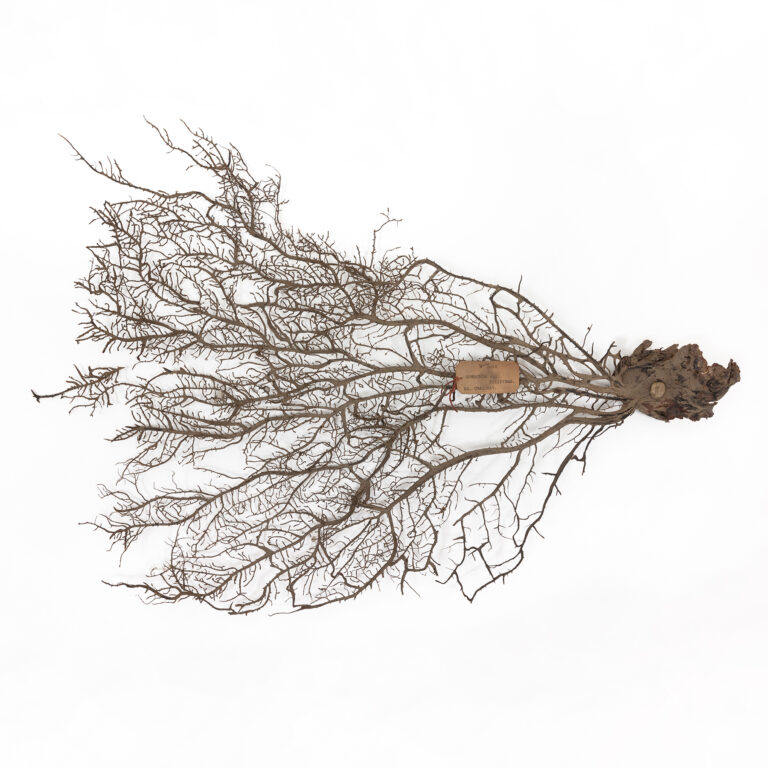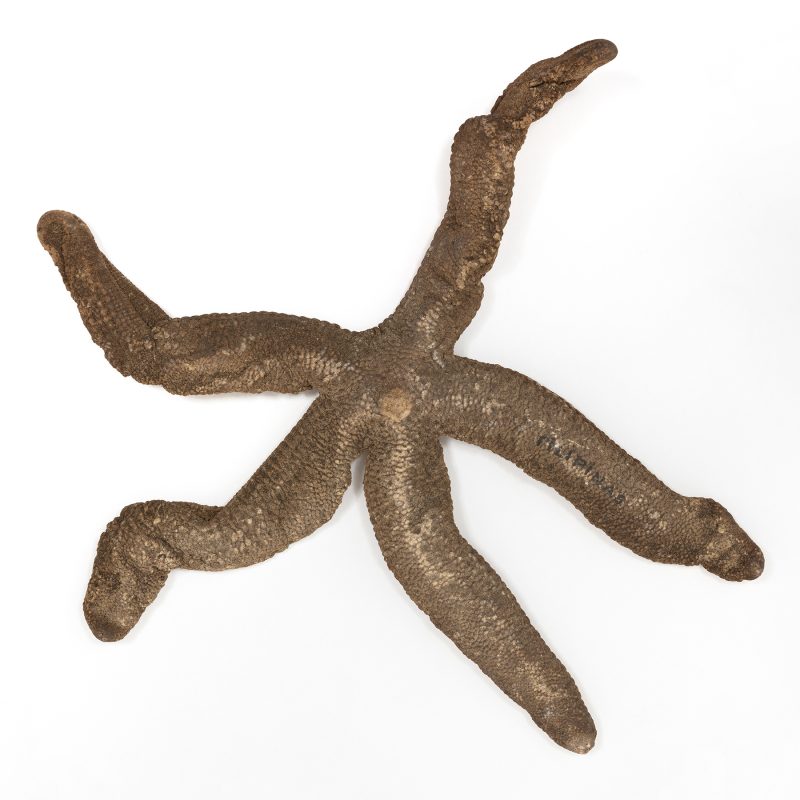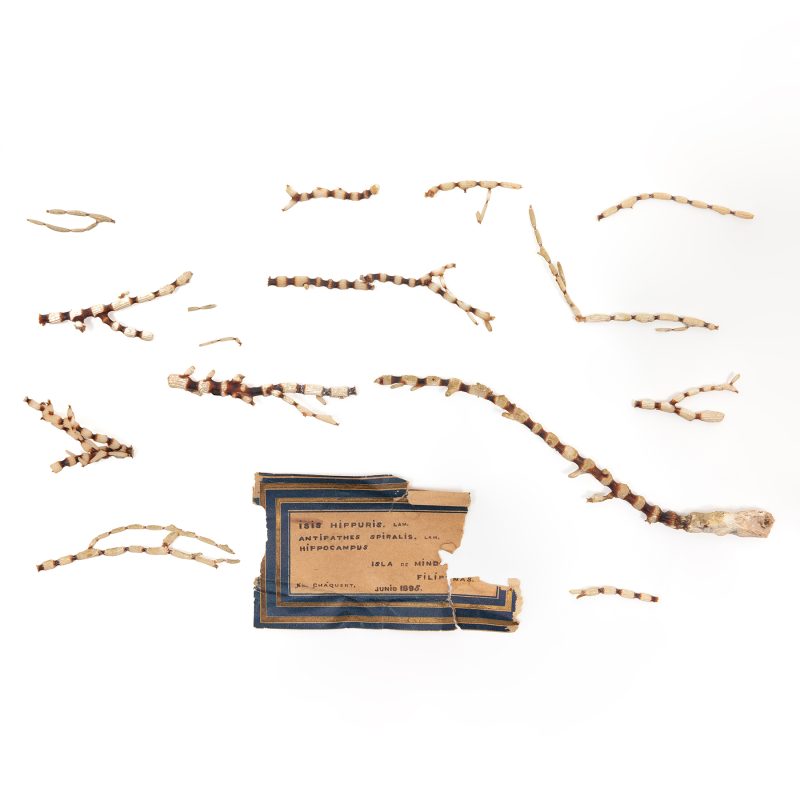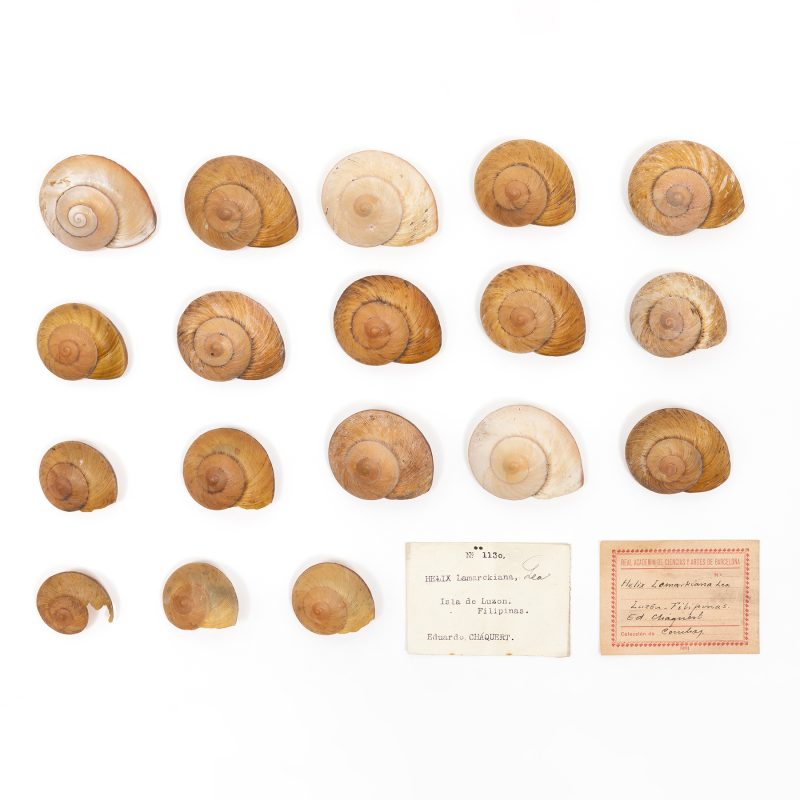Summary of results
This is a specimen of an invertebrate skeleton specimen with the scientific name Plexauridae from the Philipines (no further geographical details are given) which was donated by Eduardo Luis Cháquert y del Cotarro to the Natural Sciences Museum of Barcelona. Both the way in which it was acquired and the year in which it was collected and donated to the Natural Sciences Museum are information that is not recorded in the museum’s archives.
Chronological reconstruction of provenance
From the reconstruction of the donor’s biography it can be deduced that the donor was possibly also the collector of the specimen. It is important to note that what little information we have on the specimens is reduced to a very scientific perspective. Therefore, reconstructing the chronological line of provenance of the specimens becomes extremely difficult if we do not focus on the figure of the donor. Eduardo Luis Cháquert y del Cotarro (?–1902), who was appointed a patron member of the Royal Academy of Sciences and Arts of Barcelona on 19 January 1895, was a merchant sailor and amateur naturalist who ‘resided for more than twenty years in the Philippine Islands, where he had assembled a remarkable and very numerous collection of specimens of Natural History from that region, some of which have already been ceded to this Academy’. The exact dates of his stay in the archipelago are unknown.
In June 1896, the Bulletin of the Royal Academy of Sciences and Arts of Barcelona described the work of Eduardo Luis Cháquert y del Cotarro as follows:
‘The work carried out in the Museum of Natural History with indefatigable constancy and notable zeal by Academician D. Eduardo Cháquert, the efforts made by various persons and entities, and above all, the primordial circumstance of this Museum being a natural consequence of the way of being of our Corporation, have all contributed to the extraordinary development of this important department during the last academic year; a department that is, without any doubt, at a height that it had not reached for a long time […]. Thanks to the munificence of several private individuals, some of belonging to the merchant navy, it has been possible to enrich the Museum with objects from the Philippine Islands […]. Numerous natural objects from these islands have also enriched the Museum, showing us in a palpable way the exuberant, rare, beautiful, and inexhaustible fauna of our precious archipelago: large and rare fungies, very delicate euplecteles, numerous molluscs, strange fish, remarkable reptiles have come to our Museum’.
Estimation of provenance
From archival information alone, it is difficult to determine the origin and date of acquisition of the specimen.
Possible alternative classifications
No possible alternative classifications are perceived.
Complementary sources
Archives:
Butlletí de la Real Acadèmia de Ciències i Arts de Barcelona (1892-1924). 3a època.
Gaceta de Madrid (7 de setembre de 1901). Vol. III, p. 1.223-1.239.
Reial Acadèmia de Ciències i Arts de Barcelona (RACAB). [Eduardo Luis Cháquert y del Cotarro]
Bibliography:
Luque Talaván, M., i Fernández Palacios, J. M. (2014). Del país de los igorrotes al establecimiento de provincias y gobiernos políticos-militares en la Cordillera Central de la isla de Luzón, durante el siglo XIX. Revista Hispanoamericana, 4.
Pérez, Salvador (2014). Los inicios de la taxidermia en Barcelona. Taxidermidades: Revista sobre taxidermia, su historia, curiosidades y su relación con otras artes. <https://www.taxidermidades.com/2014/03/los-inicios-de-la-taxidermia-en-barcelona.html>.




